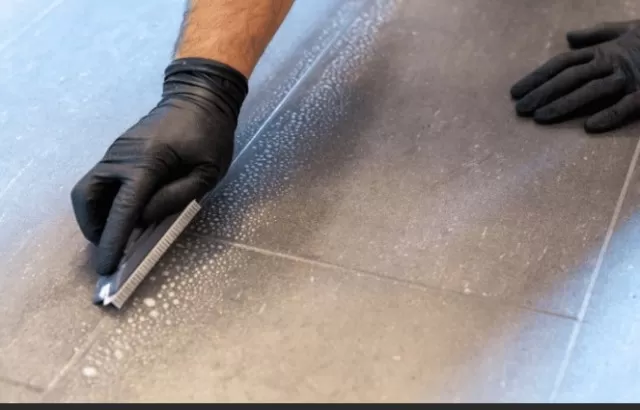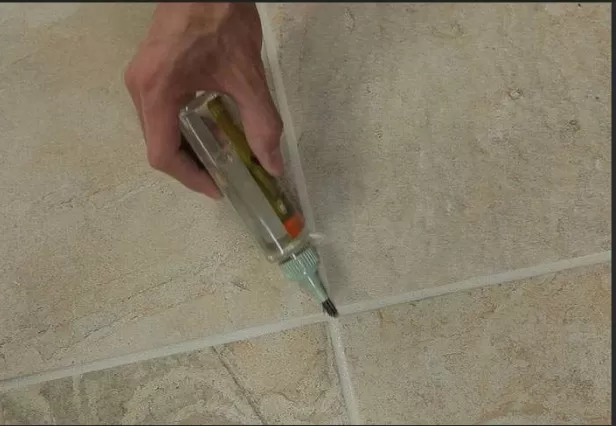Timely Grout Drying: Solved! The Duration Demystified. Embarking on a tiling project can be an exciting endeavor, but it’s essential to understand the crucial factors that can impact its success.
One such factor is the drying time of grout, which varies depending on the type of grout used. Additionally, humidity plays a significant role in the curing process, affecting the overall drying time and the strength of the grout. By gaining insights into these aspects, you can ensure a smooth and long-lasting tiling project.
Different types of grout have varying drying times, which can range from a few hours to several days. Here are some common types of grout and their approximate drying times:
Understanding the Distinction and Importance of Setting, Drying, and Curing in Grouting

In the realm of grouting, it is essential to grasp the disparities between setting, drying, and curing processes.
These terms may appear interconnected, but they each hold a distinct significance that warrants comprehension before engaging in grout-related tasks.
Setting primarily involves the act of placing and applying grout in the designated areas between tiles.
It is the initial stage where the grout is positioned to fill the gaps, ensuring a seamless and uniform appearance.
Drying, on the other hand, pertains to the duration required for the grout to achieve a dry texture to the touch.
It signifies the superficial absence of moisture on the surface, which may give the illusion of being fully ready for use.
However, it is crucial to recognize that mere dryness to the touch is insufficient when working with grout.
The process of curing, the final and most crucial stage, encompasses molecular transformations within the grout that ultimately establish a robust adhesive bond.
During the curing phase, a remarkable phenomenon called the hydration process takes place.
This process involves water reacting with the cement present in the grout. The result is the formation and growth of calcium silica hydrate crystals, which interlock and envelop the sand particles within the grout.
Through this complex mechanism, the grout gradually solidifies, leading to the creation of a durable and firmly bonded structure.
Notably, an essential aspect of the curing process begins with allowing the grout to rest for a minimum of 10 minutes after mixing but before its application over the tiles.
Therefore, it is advisable to utilize the freshly mixed grout promptly after its preparation, rather than using it later in the day or after it has been left unused overnight.
This way, the grout maximizes the opportunity for optimal curing, enhancing its overall strength and performance.
By comprehending and respecting the disparities between setting, drying, and curing, and by adhering to the recommended practices, one can ensure a successful and long-lasting grouting outcome.
Variations in Dry Times for Different Types of Grout
When it comes to determining when it is safe to take a shower after grouting the tile in your bathtub or shower, the exact timeframe cannot be set in stone.
The duration for grout to cure depends on the type of grout being utilized. The two main types commonly encountered are epoxy grout and cementitious grout, with the latter further divided into sanded and unsanded varieties.
The question of “How long to leave grout before wiping?” remains consistent regardless of whether epoxy or cementitious grout is employed.
Generally, the grout should be left to set for 15 to 30 minutes before using a damp sponge to remove excess grout. However, the drying times, or cure times, for each type of grout differ.
Below, you will find additional details about each type of grout and their typical drying durations. Nevertheless, it is always advisable to consult the instructions provided on the grout packaging for the most accurate information regarding a specific product.
Sanded grout, a type of cementitious grout, often necessitates up to 72 hours to achieve full curing.
While this extended period might not be ideal, the advantage of sanded grout lies in its relatively easier workability, particularly when it comes to removing excess grout from the tile surfaces. It is important to note that when using sanded grout in a bathroom, it is recommended to apply a penetrating sealer to enhance its performance and longevity.
On the other hand, unsanded grout, another variety of cementitious grout, typically requires a shorter drying period compared to sanded grout.
It typically takes around 24 to 48 hours for unsanded grout to fully cure. Due to its finer texture, unsanded grout is often chosen for grout joints that are less than 1/8 inch wide.
Like with sanded grout, applying a penetrating sealer to unsanded grout can provide additional protection and durability.
Epoxy grout, a different type altogether, possesses unique characteristics and drying times.
Epoxy grout is known for its exceptional strength, stain resistance, and water resistance. It generally takes approximately 24 to 48 hours to dry and cure, making it a relatively efficient option compared to certain types of cementitious grout.
While these estimates provide a general idea of drying times, it is crucial to consult the specific instructions provided by the grout manufacturer.
They may offer more precise guidelines tailored to the particular product being used. By adhering to the recommended drying and curing durations, you can ensure that your grouted tiles achieve the desired level of strength, durability, and performance.
Ambient conditions

Such as humidity and temperature, are additional factors that significantly influence the drying time of grout.
While the type of grout chosen is important, these environmental factors can impact the overall drying and curing process as well. In particular, the level of humidity in the room where grouting takes place can affect the drying time of ceramic tile grout.
In bathrooms with higher humidity levels, the grout will typically require more time to dry compared to bathrooms with lower humidity levels.
The moisture in the air slows down the evaporation process, prolonging the drying time of the grout.
Furthermore, room temperature also plays a crucial role in determining how long it takes for grout to dry and cure, whether it is newly applied grout or grout repairs.
When humidity levels are the same, grout generally dries faster in a warm room than in a cold room. Higher temperatures facilitate the evaporation of moisture from the grout, expediting the drying process.
It is important to note that controlling outdoor conditions, such as humidity and temperature, is more challenging than managing indoor settings.
Consequently, if you are working on an exterior grout project, the drying time is likely to be longer compared to an interior project due to the influence of outdoor environmental factors.
To ensure optimal drying and curing, it is recommended to consider and control the ambient conditions as much as possible.
Maintaining a well-ventilated area, using dehumidifiers if necessary, and adjusting the indoor temperature can help expedite the drying process and promote successful grout adhesion.
Ultimately, understanding and accounting for the impact of ambient conditions on grout drying time will contribute to achieving satisfactory and long-lasting results in your grouting projects.
Lowering the humidity level in the room can indeed be beneficial in expediting the grout drying time to some extent
Taking measures such as removing indoor plants and utilizing a dehumidifier can help reduce the moisture content in the air, thereby potentially reducing the time it takes for the grout to dry.
However, it is important to manage expectations and not anticipate a significant or dramatic decrease in drying time.
While decreasing humidity can assist in the drying process, it is crucial to exercise caution and prioritize patience when waiting for grout to dry and cure.
Rushing the process and not allowing sufficient time for the grout to fully cure can have detrimental consequences, potentially compromising the integrity and durability of your grouting project. Cutting corners in the drying phase may lead to improper adhesion, weak bonding, and even premature failure of the grout.
Therefore, the best approach is to maintain patience and adhere to the recommended drying and curing times specified by the grout manufacturer.
Each type of grout may have specific guidelines for drying and curing, and it is essential to follow these instructions meticulously to achieve optimal results.
Remember, investing the necessary time and patience in the grout drying and curing process will contribute to the long-term success and durability of your grouting project.
Rushing the process can result in costly mistakes and the need for future repairs.
Don’t forget the grout sealer

It is essential not to overlook the importance of applying a grout sealer in most cases, especially for wall and floor tile grout.
However, knowing when to apply the sealer requires consideration of the grout’s drying and curing process. Applying a sealer too early can lead to issues such as peeling and compromised water resistance.
Before sealing, it is crucial to allow the grout sufficient time to fully cure.
Rushing the process and applying the sealer prematurely can result in inadequate bonding and reduced effectiveness of the sealer. The grout should be given the necessary time to complete its curing process before the sealer is introduced.
Once the grout sealer is applied, it is equally important to allow it enough time to dry and cure.
While the sealer may feel dry to the touch after approximately 2 hours, it can take up to 72 hours for it to achieve complete curing. During this curing period, it is advisable to avoid activities that could disturb or compromise the sealer’s integrity, such as using the shower, walking over the tile, or cleaning the grout—even with an approved grout cleaner.
Respecting the curing time will ensure the sealer forms a strong protective barrier and maximizes its effectiveness.
To obtain more precise information regarding the drying and curing times for the specific grout sealer you intend to use, it is always recommended to consult the manufacturer’s instructions.
Each sealer may have its own recommended drying and curing durations, and following these guidelines will help ensure optimal results and long-term protection for your grout.
By allowing adequate time for both the grout and the grout sealer to dry and cure, you can safeguard your tile surfaces against Water Damage, enhance their longevity, and maintain their aesthetic appeal.
*The information is for reference only.